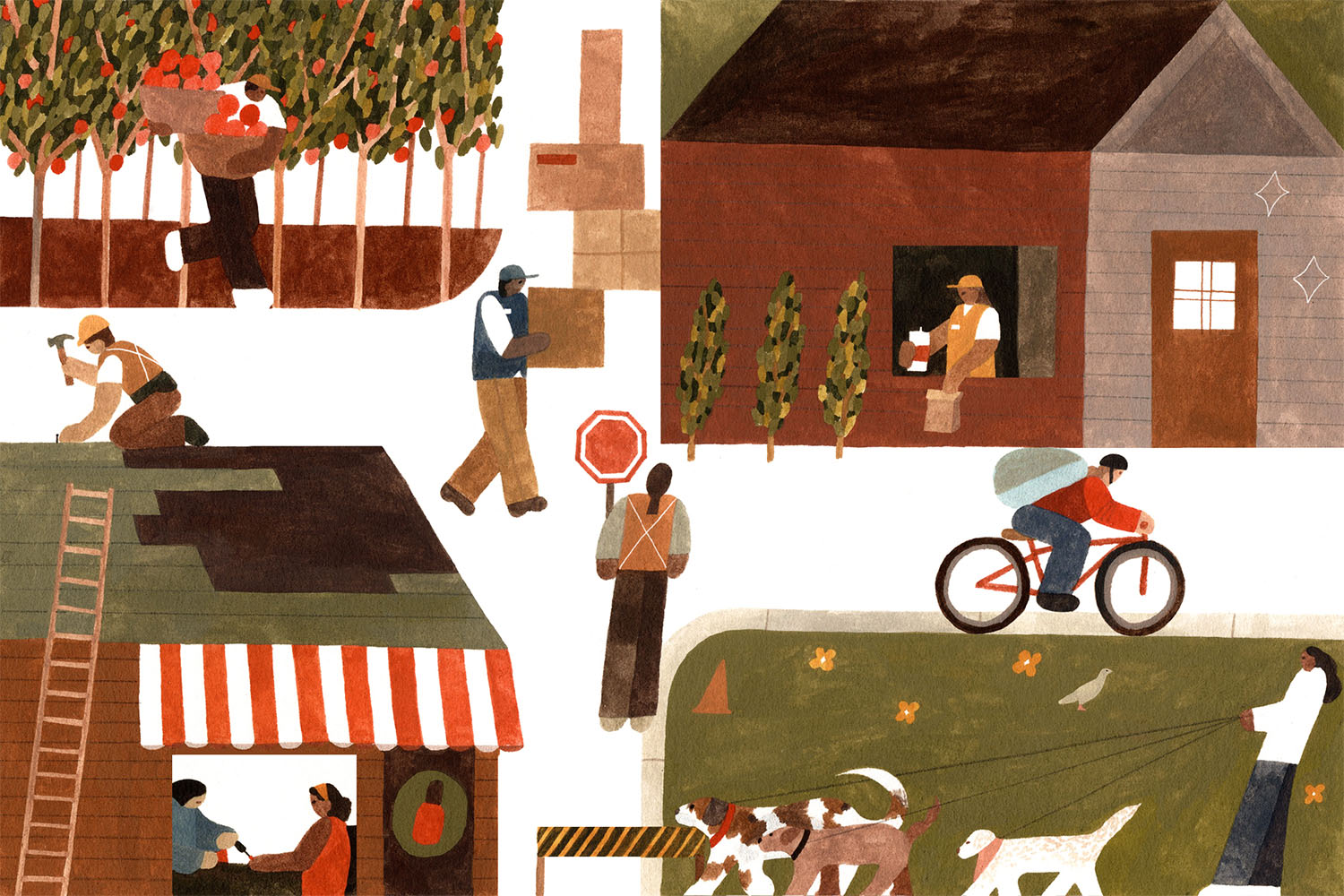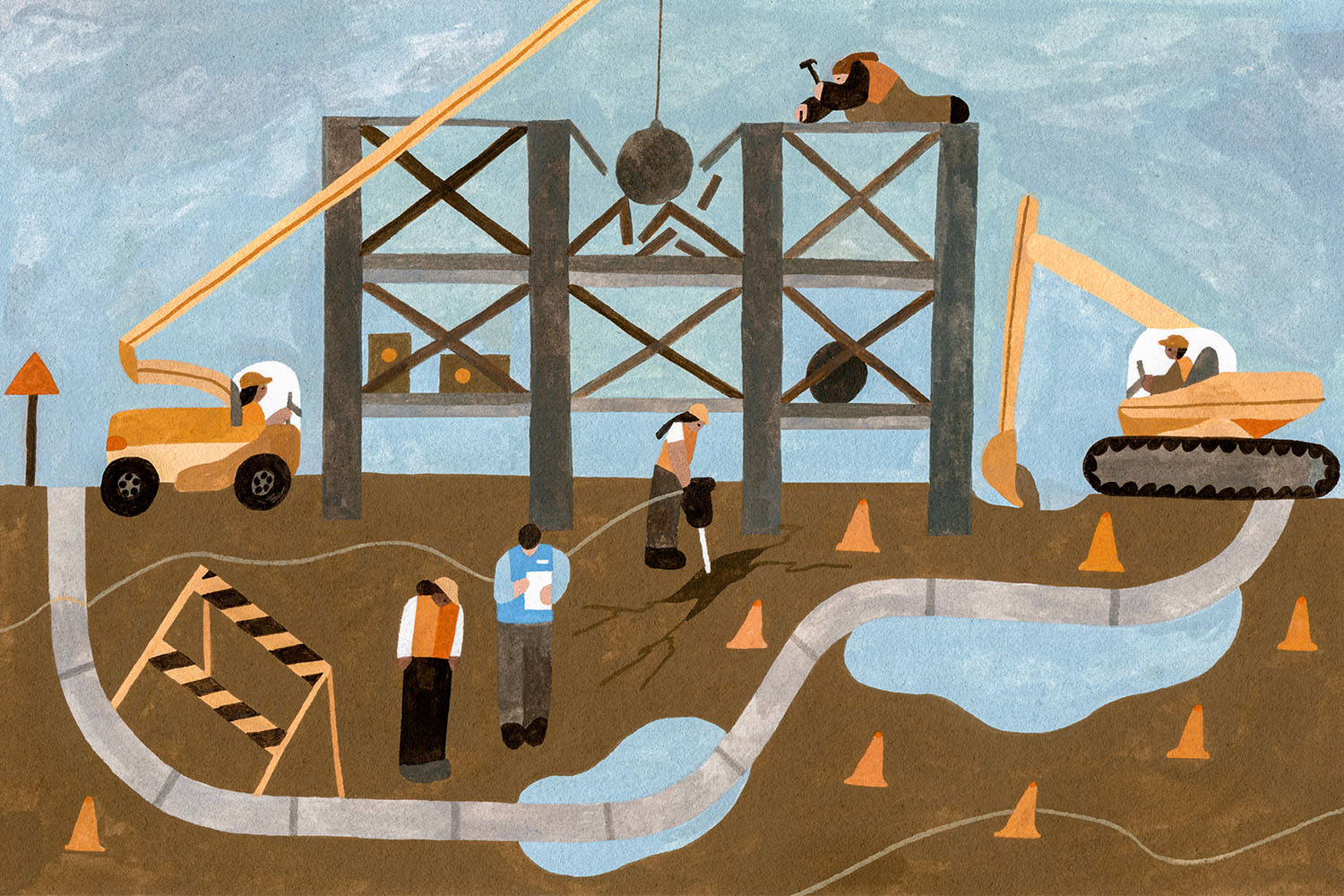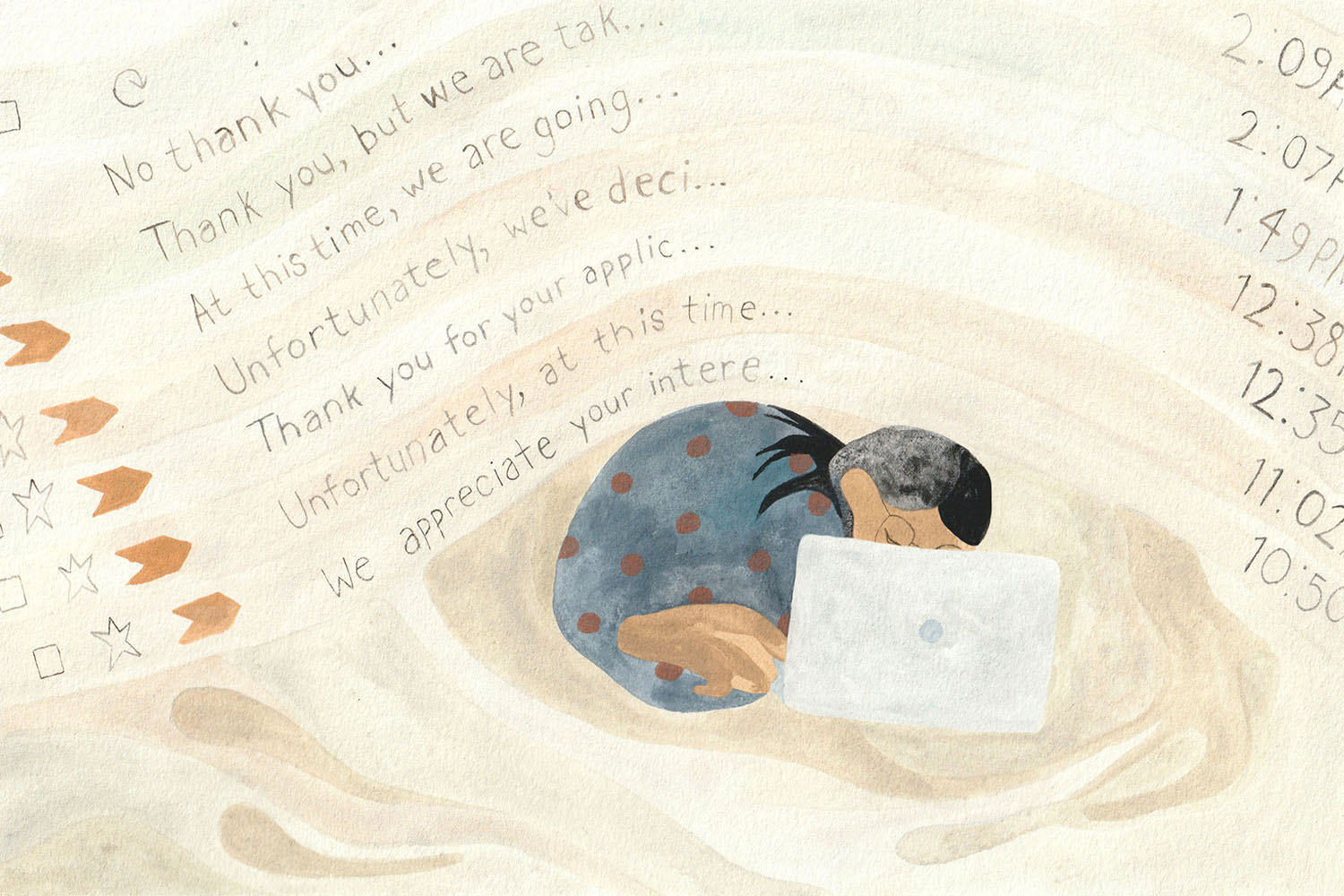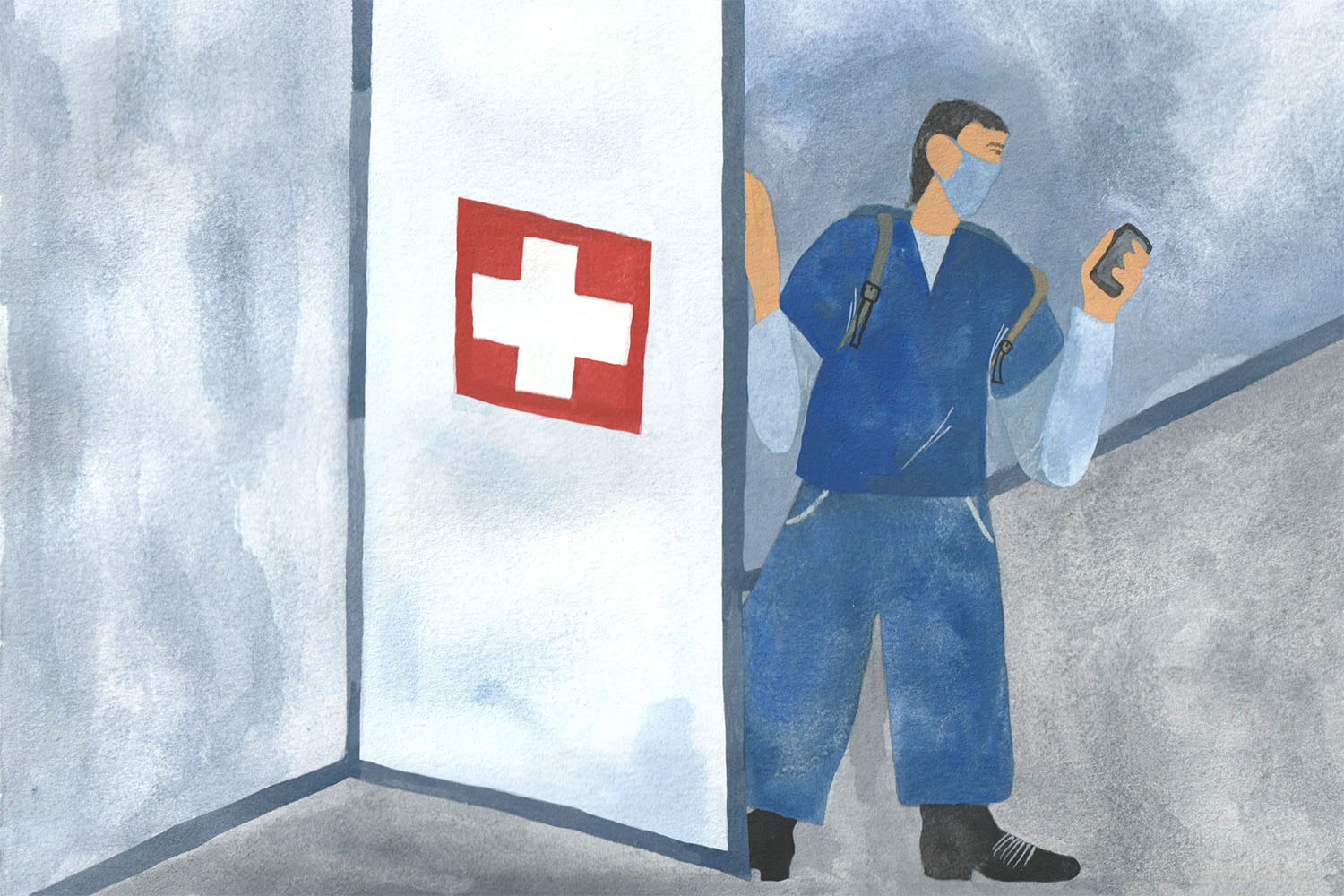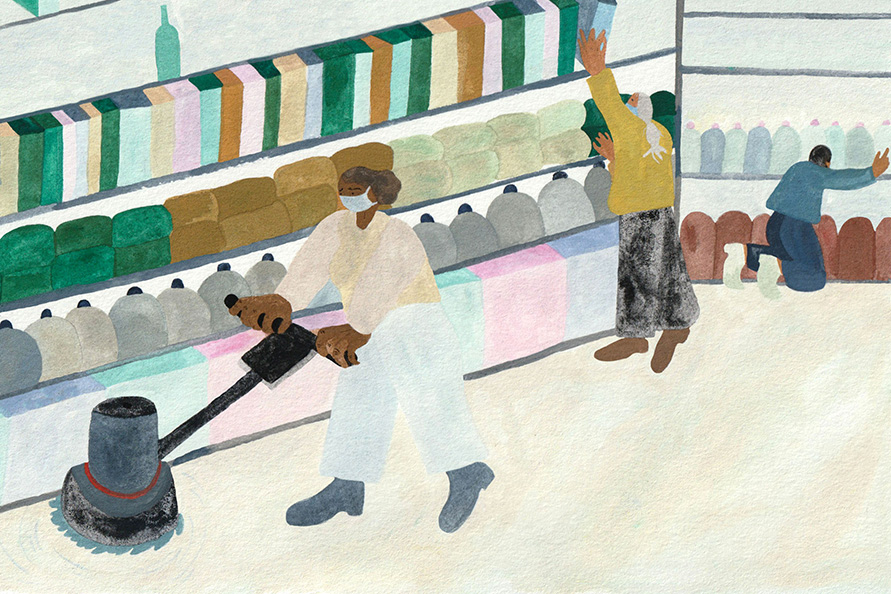
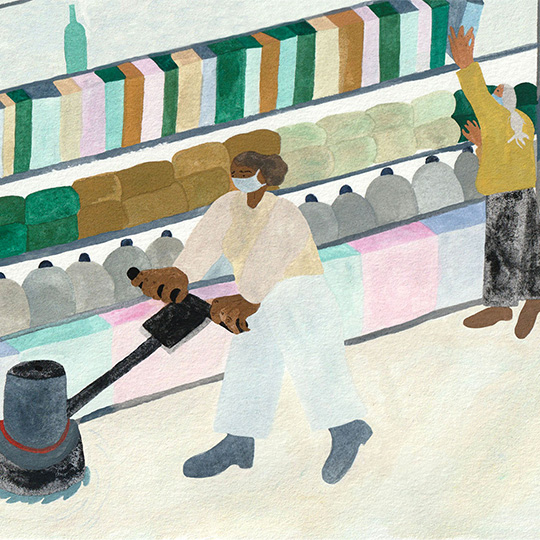
When Heather walks through her local FreshCo in Whitby, Ontario, she steers clear of the aisle with Doritos and dip. Her two teenage kids have an affinity for them and they’re usually a treat reserved for special occasions, but the price of the chips has gone up. Instead she stocks up on chicken and rice, food she knows is inexpensive but filling.
Recently, Heather and her family have gotten used to forgoing many small pleasures in order to prioritize mortgage payments, groceries, the cost of schooling. Dental bills, which used to be covered through health insurance coverage, are now scrounged together—a struggle of borrowing, saving, and sacrifice.
Heather immigrated from Trinidad and Tobago to Toronto in 1989. Now 57, she lives in a home with her two children and the backyard she always dreamed of. She’s a mother first, someone determined to curate a life of stability and love for her children.
Heather has worn many hats in her career, from owning her own hair salon to working in administration and managerial roles at various businesses. When COVID hit, she had been working at the City of Oshawa doing admin for five years. She was offered a contract through the city testing people for COVID, but she was hesitant to be at the frontline at such an uncertain time. Instead she opted to be at home and look for safer work. She eventually found a job as a personal assistant for a real estate firm, but was let go. She then applied for employment insurance (EI).
On EI, you can receive a maximum of 55 percent of your insurable earnings, up to a maximum earning of $56,300 a year, or $595 per week. Heather earned $1,000 every two weeks. But with her mortgage, car payments, gas payments, insurance, and phone bills, she says the EI income felt like spare change. “I have to buy groceries,” says Heather. “You have to find another way to make ends meet.” That’s when, like many people on EI, Heather began looking for work in the informal economy.
The Canadian EI system has long been riddled with holes that let the most vulnerable slip through the cracks. Some people receive an inadequate amount to live off. Others, like temporary foreign workers, pay insurance premiums yet are rarely eligible to receive benefits. And as the status quo shifts into more unstable work, many part-time and gig workers do not receive enough hours of work to qualify. Sixty percent of unemployed workers are unable to access EI for this reason.
Kendra Strauss, professor of labour studies at Simon Fraser University, says those changes have left huge holes in the program. “EI is covering a smaller and smaller proportion of all workers,” says Strauss. “And the growth among the groups who do not tend to qualify for EI has been largest among racialized immigrants, immigrant workers, and women.” The hardest workers in Canada—the ones that provide us with food, make sure our stores are clean, and work hours that are taxing to their health, are the ones who must navigate the complexities of an EI system that was never made for them.
The problems with EI go back at least three decades. In 1993, changes to the system under Finance Minister Paul Martin meant that people who quit their jobs without just cause, were fired for misconduct, or refused to accept suitable employment became ineligible for benefits. That essentially meant that people who were in unsuitable work conditions were married to their work due to the lack of a financial security safety net. In 1994, Bill C-17 introduced variation in the number of hours necessary to qualify for EI based on the region and the type of work people did. People in Toronto, where unemployment is lower than other areas of the country, face some of the toughest standards to qualify for and receive EI.
And in 1996, Bill C-12, The Employment Insurance Act introduced the number of hours worked (420-700) to determine benefits, instead of the 12 to 20 weeks of insurable employment. Due to new eligibility rules, the EI surplus amounted to $6 billion dollars under Finance Minister Paul Martin. The sum total of these changes meant an EI system that was stingier, harder to access, and at odds with the reality of work for most vulnerable Canadians.
“The bottom line is that if you were employed in a lower or modest income job, you’re kind of less likely to qualify for EI at all,” says Jennifer Robson, an associate professor of political management at Carleton University. “If you do, the actual dollar value of your weekly benefits is probably going to be very difficult to live on for very long.”
“The hardest workers in Canada—the ones that provide us with food, make sure our stores are clean, and work hours that are taxing to their health, are the ones who must navigate the complexities of an EI system that was never made for them”
When Heather first began looking for work to supplement her EI, she took to social media, scrolling through Facebook and WhatsApp for employment opportunities. She was looking for work in the “informal economy”—working off the books or under the table. It’s a kind of work for those living in poverty, as people who earn high wages don’t usually need to access it.
The informal economy (a term that excludes criminal activity) is not necessarily bad. John Stapleton, a social policy expert and founder of Open Policy Ontario, says that “every dollar that is made in the informal economy eventually shifts to the formal economy.” It’s only in large underground economies is there a risk that the money never becomes formal. Work in the informal economy can help people avoid poverty, which has extreme costs for both the person experiencing poverty and society itself. But workers in the informal economy are also more prone to exploitation, as their work is undocumented and they have no formal processes to report abuses.
Eventually, Heather found a job cleaning the local Food Basics in the evening from 7:30 p.m. to 9:45 p.m. She went to training for two days at a grocery store in Courtice, Ontario. The training was unpaid.
The job took a toll on her body. It’s a massive grocery store and the workers had to clean it before closing each evening. Heather wasn’t used to cleaning with an industrial floor buffer, and started to feel tingling sensations in her hands and feet. She developed plantar fasciitis. At times, when her tendonitis was flaring up, her sister would go in for her and do the cleaning.
In exchange for her labour, she received $750 a month in a lump sum, a wage that worked out to $10 an hour—less than minimum wage. But the appeal of the job was the method of payment. Because she was paid over e-transfer, Heather was able to not declare her wages and continue collecting EI.
Workers like Heather take on cash work because these are the roles that they can get. If they were offered jobs with benefits, high wages, and a regular schedule, they would happily take them.
“Someone who has a stable job doesn’t feel the need to go on EI,” says John No, a staff lawyer in the workers’ rights division at Parkdale Community Legal Services. “There’s a risk of being paid under the table and getting EI. There are penalties, fines, and it’s not worth it for someone who has a high salary. People do things out of desperation.”
While EI does allow you to work while on claim, critics question whether clawbacks kick in too soon for people if they work while on claim. The added level of bureaucracy also creates barriers, according to Robson. “I know that every government program and bureaucracy creates obstacles for people, particularly people who are maybe more vulnerable, or have not had previously terrific interactions with government, or don’t necessarily have the middle-class confidence to advocate for oneself against the government bureaucracy,” says Robson.
Why are there such large policy gaps in the execution of EI? Part of the problem is the dissonance between who is making policy and who the policy is made for. “A lot of the rules make perfect sense to federal public servants who have stable salaries and advanced education degrees,” says Robson. These policymakers are not in proximity to workers who are managing multiple precarious roles, do not have an employer, and are trying to get by day-to-day.
Sometimes these policymakers argue that workers need to engage in financial planning. But people making low wages do not always have the luxury of thinking long-term. The long-term is for the wealthy. “Financial Planning” depends upon being able to “plan” an income, one that is guaranteed, and then being able to choose where to distribute it. Further, there are some things you can’t plan for financially—on a smaller scale, like your car getting towed, and on a larger scale, like the COVID-19 pandemic.
Beginning this August and ending on October 8, EI consultations are being held by the Government of Canada to identify the gaps in the program, where the dissonance between the worker and the policymakers lies. Participants can take an online survey or email the government with ideas and feedback on the EI system. In the meantime, workers like Heather are forced to reckon with the system as it currently is, and find a way to make ends meet.
Working evenings at the grocery store, Heather found that her sleep pattern completely shifted, a reality for many precarious workers. Her body was utterly fatigued by the weight of the physical labour. “After a month, I crashed,” she says.
When Heather thinks about her experience working while on EI today, she sees it as exploitation. “It really had nothing [to do] with dignity,” she says. “Somebody just offers you a contract. And because it fits your need at that particular time, then you just do it. That was definitely exploitation. But if you need it, you will do it.”
Heather’s EI term is up in October, and she feels anxious about what she will do afterwards—an anxiety that many Canadians face more frequently these days. Occasionally her manager from the grocery store still contacts her and asks if she wants to take on shifts for extra cash. She takes them when she can.
Editor’s Note: A previous version of this article included Heather’s full name. It has been removed to protect her identity.







